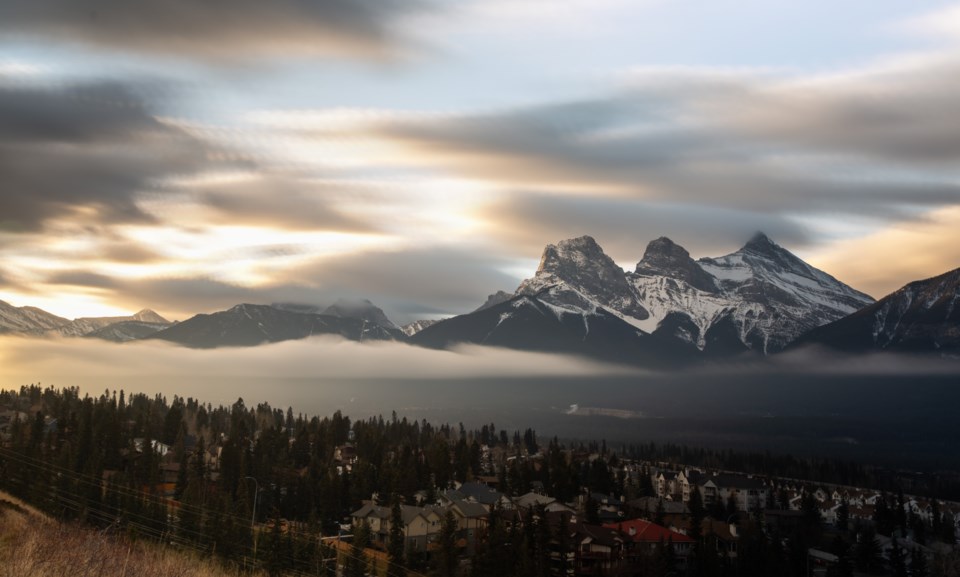BOW VALLEY – A provincial government proposal for Alberta to move to daylight saving time year-round is drawing rebuke from those who say the yes-or-no referendum vote is flawed.
When residents cast their votes in the municipal election on Monday (Oct. 18), municipalities will also the ballots for the province’s referendum questions, among them a pitch to stop changing clocks twice a year.
Every March, Albertans ‘spring forward’ an hour to observe daylight saving time and then ‘fall back’ an hour in November to revert to standard time, but the province is asking Albertans if they want to switch to permanent daylight saving time, or summer hours.
The tradition of changing clocks, initially intended to save energy and make better use of daylight, was first used in Canada in Thunder Bay in 1908, but a Calgary circadian rhythm expert says a move to permanent summer hours comes with serious consequences.
“The big problem for us in Alberta, and in the Canmore and Banff area on the western part of Alberta, is that if we’re on daylight saving time, our solar day that our body clock follows is going to be really delayed relative to what our society clock is telling us,” said Michael Antle, a professor in the department of psychology at the University of Calgary and Hotchkiss Brain Institute.
“If we adopted permanent daylight saving time, the big change over what we're doing now is that everybody has to get up and go to work an hour earlier in the winter than what we currently do relative to when the sun rises… it will really offset what our body needs.”
For example, if Alberta moves to permanent daylight saving time, the sun will rise as late as 10:12 a.m. in northern communities such as High Level in December, 9:18 a.m. in Calgary and closer to 10 a.m. in Banff and Lake Louise. On the flip side, the sun will set later.
“Since our body clock follows the sun and the sun is so delayed, it’s going to be really hard to get up and get out of bed and go to work in the morning,” Antle said.
The Yukon made the change to permanent daylight time last year, while British Columbia was set to make the permanent changes but held off during the pandemic. Some states south of the Canada-U.S. border have also been debating the change.
Russia, on the other hand, another northern country like Canada, experimented with permanent daylight time in 2011 before scrapping it three years later.
Antle said part of the problem for Alberta is its geographic position relative to the time that’s followed.
He said on standard time, Alberta follows Universal Coordinated Time minus seven hours, yet the ideal location for this time zone is quite a bit east of Alberta.
“We’re actually offset from it already. Even on standard time, the middle of the solar day, which should happen at noon, actually happens closer to one o’clock, and on daylight time, it’s closer to two o’clock,” he said. “So what we’re really looking at if we adopt permanent daylight saving change is more like what we would call daylight double time.”
Antle said the mismatch between the social clock that governs people’s lives and the circadian clock that follows the sun and governs people’s biology will be quite severe for health and safety.
He said kids and workers typically leave for school and work between 8 a.m. and 8:30 a.m., which is long before dawn, meaning winter days will see sleepy workers, sleepy students and sleepy drivers.
“With our body clock and our social clock – the one that our boss and our teachers want us to follow – the bigger that mismatch the harder it is on our health and safety,” he said, adding less sleep can contribute to high rates of disease like obesity, heart disease and diabetes.
“We know that sleepy drivers behind the wheel is sometimes as bad as an intoxicated diver behind the wheel.”
Aside from the health concerns, Antle said a move to year-round daylight saving time may also affect ski resorts that may not be able to open as early as they can under standard time.
“During the winter in the busy ski season, they won’t actually be able to start their ski lifts I don’t think until sunrise, so it’s probably going to hit the economy a little harder there,” he said.
“For people who enjoy cross-country skiing, maybe a little later in the evening so they can get out after work, it might benefit a little bit for the active folks who live in Canmore, but the ski hill operators and businesses out there are certainly going to be impacted.”
The referendum question about daylight saving time is a non-constitutional question under the authority of Alberta’s Referendum Act. The result of the vote is binding on the provincial government.
If it's a yes vote, the change will not happen before fall 2022. Albertans will continue to change their clocks in the fall of 2021 and the spring of 2022.
A voter information centre is available to answer questions about the referendum vote on weekdays from 8 a.m. to 8 p.m. and Saturday from 10 a.m. to 4 p.m. The toll-free number to call is 1-877-422-8683.
Read more from RMOToday.com



